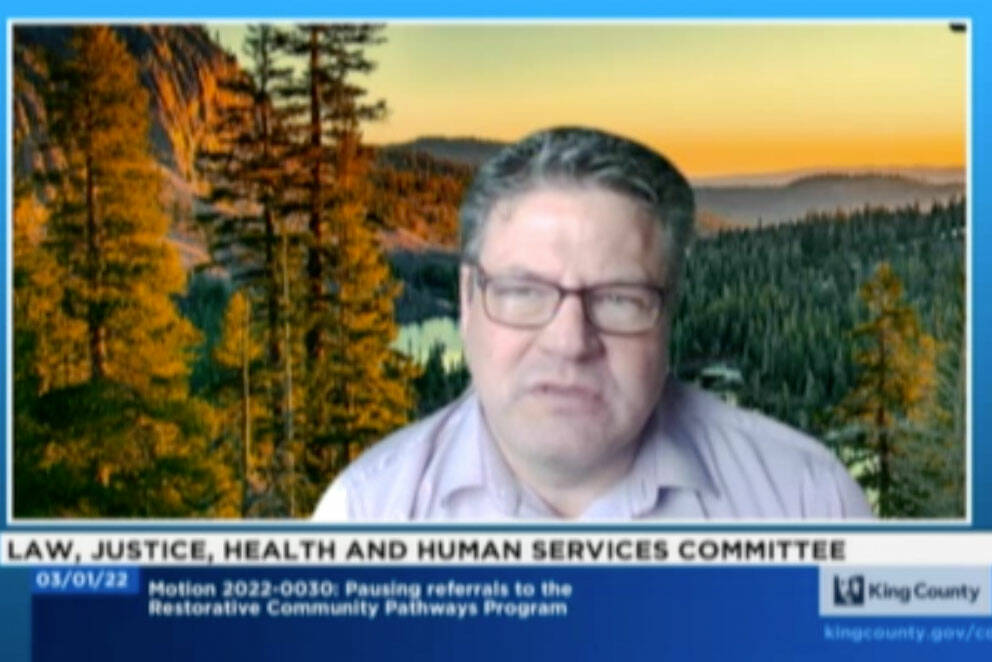A proposal to pause the recently implemented Restorative Community Pathways program, a program intended to divert juvenile criminal cases from the juvenile justice system into a rehabilitative program, has ignited a countywide debate on justice reform in our region.
King County Councilmember Reagan Dunn recently proposed a motion to recommend pausing the program just months into its implementation. Dunn said his concerns with the program are with some felonies that the program included such as certain assault charges, which he said he believes youth should have to “see a judge” in order to be held accountable.
Dunn also proposed the motion on behalf of the mayors of Auburn, Federal Way, Kent and Renton — cities that have experienced a major uptick in crime and with mayors who have previously opposed the Restorative Community Pathways program.
Auburn Mayor Nancy Backus said she supports restorative justice and rehabilitation in her community, but expressed concerns that the RCP program would allow certain crimes such as specific assault charges and illegal possession of a firearm. She believes diverting these kinds of juvenile offenders from courts could allow them to escape accountability.
The program, according to Dunn, has a “major perception problem” as the South King County mayors scramble to mitigate the growing crime in their communities.
During a Law, Justice, Health and Human Services Committee meeting on March 1, when the proposed motion was brought up, many community members testified against pausing the Restorative Community Pathways program and argued that the program was a necessity in the region’s communities.
Cynthia Ricks-Maccotan, who works for a youth violence prevention program under Virginia Mason Franciscan Health, said the reason the RCP program allows referrals of youth who have committed offenses — among those objected to by city leaders such as Backus and Federal Way Mayor Jim Ferrell — is because those are the offenses that historically have been disproportionately more punitive for youth of color.
Karen Pillar, director of policy for youth legal services office, cited stats from the last time the state studied recidivism rates for incarcerated youth. She said 50 percent of incarcerated youth end up returning to the criminal justice system. She argued that RCP was designed to better address and rehabilitate these behaviors — and do so better than the court system, criminal records and incarceration have ever done.
Julie Schulman testified as someone who had been involved in the justice system as a young person and someone who works with youth in support of RCP as well. Schulman said she wondered why Dunn would take such a “large step backward” from “progressive” and “holistic” solutions to justice reform that works to break down the school-to-prison pipeline.
Renton City Councilmembers Kim-Khanh Van and Carmen Rivera echoed this sentiment, expressing belief that the region needs holistic approaches to diverting youth from the court system in favor of a more rehabilitative approach.
Rivera said that the South King County mayors who objected to RCP do not understand the methodology of restorative justice or its effectiveness. She said leaders should listen to the first-hand experiences and experts who are involved with these programs.
King County resident Abby Brockman testified in favor of the program, saying that Dunn’s argument against the RCP seems to pit restorative justice and public safety against each other. Brockman said she believes restorative justice and public safety can coexist and that restorative justice that works to rehabilitate rather than punish is a public safety strategy.
She argued that restorative justice programs such as RCP make a root-cause analysis into crime and help to make progress to prevent crime and strengthen community through the process.
Over 25 people signed up to testify in support of the Restorative Community Pathways program.
Jimmy Hung, chief deputy prosecutor of the King County Prosecuting Attorney’s Office’s juvenile division, spoke to the thousands of juvenile prosecution referrals his office would typically receive in past years and the difficult decisions he and his office have had to make about when it makes sense to bring a juvenile into the court system.
To demonstrate this philosophy, he used an example of a situation in which two school students see each other outside of school and one decides he is going to bully the other and take his backpack. From a legal perspective, this would be a felony robbery. But, Hung said, reasonably this kind of situation would make more sense to be dealt with between the families in a community-based approach, rather than to drag that student into the juvenile justice system.
At the end of public comment, the motion came up for a vote among the committee, during which it was rejected as every committee member other than Dunn voted against it.


